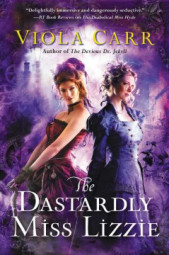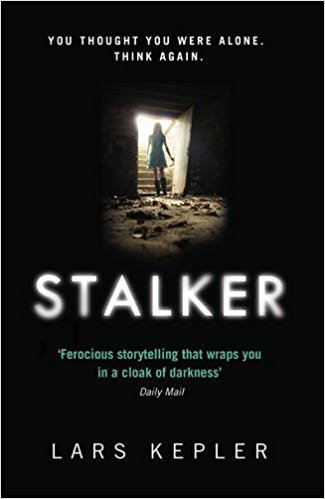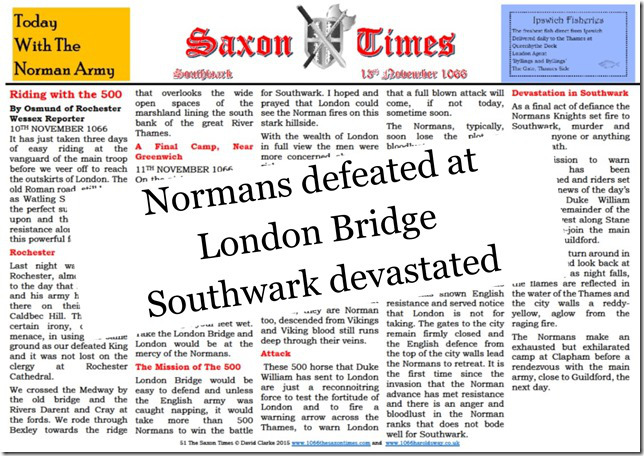
Hard to believe, but true nevertheless: new moms may learn. And study. And indeed write seminar papers. Well, at least, that’s what I just did: writing a seminar paper on the representations of motherhood in the current American novel. Thought I’d share this one with you – same version as I sent to my professor, but split into four parts. Stay tuned – the next parts will be uploaded during the next weeks.
1. Introduction
Throughout history, and especially throughout the history of (western) literature, depictions of mothers and motherhood, in one way or another, have had a central role in shaping societies’ expectations of motherhood. This paper intends to analyze ways in which motherhood is portrayed in the contemporary US-American novel. For this analysis, three novels were chosen that allow insights into the complex ways in which mothers are depicted in today’s literature. The three novels selected for the analysis are Eleven Hours by Pamela Erens, The Sun Is Also a Star by Nicola Yoon and Here I Am by Jonathan Safran Foer. There are several reasons for selecting particularly these books, the first being that each of these novels was published very recently, that is, in 2016. The second reason is that the stories the novels tell are set at the US-American east coast (the first two stories take place in New York city, particularly focusing on some Brooklyn neighborhoods, such as Flatbush, with a majority of immigrants from the Caribbean, while the third novel is placed in Washington, DC) and through these settings share a similarity that is of some interest, as the stories are all placed in urban rather than in rural areas and thus might have an impact on the content of the books in question. The third reason for choosing these novels particularly among a broad range of other possible books is the most important and most complex reason: within a heterosexual, at times even heteronormative discourse, these three novels symbolize important aspects of motherhood: the plot of Eleven Hours centers on childbirth, narrated from women’s perspectives; The Sun Is Also a Star allows insights into the role of motherhood from the children’s perspective, and finally, Here I Am is primarily told through the husband’s point of view, commencing when the marriage is about to end, thus, in a way, ending or at least pausing the cycle of heteronormative motherhood: with the end of the marriage and thus the disintegration of the nucleus family, the mother stops fulfilling a crucial part of her identity as mother and wife.
Through an analysis of these three books we are able to take into consideration each of the agents that are crucial in a heteronormative interpretation of motherhood: the mother herself, her children (responding, in a way, to the fact that the children’s perspective is only rarely analyzed in literature about motherhood) and the point of view of the husband respectively the father. These diverging perspectives allow answering the paper’s main question, namely: How is motherhood in the contemporary US-American novel portrayed? As an evenly important aspect the paper seeks to answer in how far the portrayal of motherhood is influenced by the perspective of the narration, that is to say whether portrayals of mothers in literature differ from one another when told through different perspectives.
To answer the paper’s question, the first chapter explains the relevance of the feminist approach to literary criticism, before looking at some of the themes frequently found in the depiction of motherhood, such as the contrast between strong and weak women, the aspect of fragile motherhood and the theme of the absent mother, which is often to be identified in popular culture, such as in Disney movies.
In order to investigate into the ways in which these aspects shape contemporary depictions of motherhood, literature from different sources will be used. The reason for resorting to various resources is that motherhood and the role of the mother are of relevance in many fields of culture and society as well as in medicine, so that it is important to take into consideration literature from at least some of these fields.
2. Theory 2.1 Feminist Approach to Literary Criticism
Given the centrality of portrayals of motherhood in literature in this paper the analysis is based on a feminist approach towards literary criticism. That is to say that the ways the paper seeks to answer its basic research interest is based on a gendered reading of the novels in question. In order to make use of a feminist approach, a basic understanding of what feminist critique entails is necessary. Richter describes the feminist approach as follows:
This school of theory looks at how aspects of our culture are inherently patriarchal (male dominated) and this critique strives to expose the explicit and implicit misogyny in male writing about women (Richter 1346).
While there seems to be no compelling reason to argue that the novels discussed in this paper are explicitly misogynic, the paper’s findings support the claim that motherhood is portrayed in terms of fragility and weaknesses and only rarely gives voice to women’s own maternal experiences.
2.2 Strong versus Weak Women
Feminist literature on the portrayal of women in general and of motherhood in particular abounds with instances in which women and mothers are either illustrated as overly heroic or desperately weak, both in an explicit as well as in an implicit manner. Barbara Gobrecht, for example, has analyzed the portrayal of girls and women in fairytales, with an interest especially in the depiction of strong versus weak women. Her anthology of German and Russian fairy tales thus collects stories in which women are either described as demonstrating strengths or weaknesses. It is interesting that in Gobrecht’s analysis, weak women primarily appear in context of childbirth or during the times of breastfeeding their newborns. (Gobrecht 8) One such example is the Russian fairy tale “Beine golden bis ans Knie, Arme silbern bis zum Ellenbogen”. The story’s protagonist, a princess, faces punishment by her husband in case she gives birth to “unworthy” children. This fairytale is thus merely one example of how responsibility for the birth of healthy children is placed upon the mothers or mothers-to-be, while the power to punish reproductive failure is in the hands of men. Transferred to a twentieth century US-context one can argue that pregnancies are subject to following male medical power, while, on the other hand, women are expected to fulfil female patient responsibility. That this dichotomy of male power and female subjectivity can be altered is one aspect in Pamela Erens’ book, which will be looked at in chapter 2.1.
2.3 Fragile Pregnancies/Motherhood
On the basis of the evidence currently available, it seems fair to introduce the term “fragile motherhood”, or “fragile pregnancies” in order to describe situations in which a woman has her pregnancy confirmed, but either experiences fear of and/or actual child loss. While miscarriage is not rare – an estimated 20% of pregnancies miscarry (Freidenfels, “Miscarriage”) – women seldom talk about their grief, but rather experience miscarriage as a taboo. As Lara Freidenfelds notes, “[m]iscarriage rarely makes the news, except in tabloids.” (Freidenfels, “Miscarriage”). While, as Leslie J. Reagan points out (Reagan 358), women were never completely silent about their miscarriages, in recent years, personal accounts of child loss have made the headlines more frequently, ranging from tabloids such as the Huffington Post’s women’s section to articles in the Guardian (Carpenter “Miscarriage Taboo”) or the New York Times (Zucker “Grieving”). Making these stories public aims at enabling conversation about miscarriage in order to help women and families get over their losses and end the misunderstandings around miscarriage. One relevant aspect of pregnancy loss is the fact that with each miscarriage a woman experiences, the risk of losing another fetus rises, something that is described through Franckline in Eleven Hours.
Reagan, in response to the grief that surrounds child loss today, has investigated into how miscarriages were represented during the twentieth century, including both women’s and men’s reactions. According to her findings, “the meaning of miscarriage is historically and culturally constructed” (Reagen 359). Only in recent decades has the meaning of pregnancy loss shifted insofar as women in the United States experience a miscarriage as “emotionally devastating” (Reagan 359). Grief over a child lost during pregnancy seems to be expected. With this changing meaning of miscarriage, the relationship between pregnancy and motherhood, according to Reagan, has altered as well (Reagan 359). In the 1950s, for example, “[m]iscarriage … meant not only failed motherhood, but failure to conform to feminine roles.” (Reagan 362). Reagan also reports about a woman who had six miscarriages, for which a doctor identified her doubts about whether she had the ability to be a (good) mother as the cause. This hints at the importance of the anxieties a pregnant woman might feel, even though her fears are unlikely the actual cause for a lost child. Still, these kinds of concerns accompany many pregnancies, an illustration of which can again be observed in the character of Franckline in Eleven Hours.
As Reagan also mentions, Black women were, in contrast to White women, more frequently blamed if they had a miscarriage. Another noteworthy aspect referenced by Reagan is that “attention to the emotional context of pregnancy loss is a task that subordinate, lower-paid (possibly volunteer), and mostly female workers perform.” (Reagan 369) This, too, can be found in Eleven Hours. Finally, it can be argued that, when grief is emphasized as the primary reaction towards child loss, this might seem apolitical, but in many ways, this approach is influenced by the anti-abortion movement. (Reagan 366f.) This in interesting with regard to the representation of motherhood, particularly in Erens’ novel, as the book focuses on grief and anxiety caused by the miscarriages mentioned in the book without accounting for the historical construction of the meaning of lost pregnancies. The book’s protagonists, it seems, have no other choice than to mourn the life they lost, rather than think of their own life as saved after surviving a difficult end to a pregnancy, as is the case for both of the book’s protagonists.
2.4 Absent Mothers
Representations of motherhood in popular culture often feature no parents at all, or, in another version, provide audiences with stories in which mothers (if not both parents) were there before but now are absent. Frequently, the prominent role of absent parents is taken by mothers that are killed or captured, examples including Bambi, The Jungle Book, Finding Nemo or Frozen: the mothers in all these movies are dead. In a number of other Disney movies, no mention is made of the characters’ parents, or they are only briefly spoken of as having died before the movie’s story starts. Their absence in many cases enables the story to unfold, allowing for the protagonists’ growth and development. What we almost never encounter are stories in which the protagonists can be observed as having a complex relationship with their parents; most often, it is an either-or relationship: bad mothers having died, finally setting their children free, or loving mothers having passed away, forcing their offspring through a time of mourning.
While some have argued that with more recent movies such as Finding Nemo, Disney reinvented social mothering by allowing biological fathers to replace the absent mother (Brydon 37), a feminist reading of these films still reveals the at least implicitly misogynist character these productions convey. By replacing the biological mother with a male figure who engages in social mothering, Finding Nemo is just one example of the silencing of women’s voices in general and mother’s voices in particular. That such a silencing of the mother as the literary subject is still to be observed in the current American novel can be seen in Jonathan Safran Foer’s novel Here I Am, which will be discussed in chapter 3.3. (Uploaded in a couple of weeks)
Advertisements Share this:




